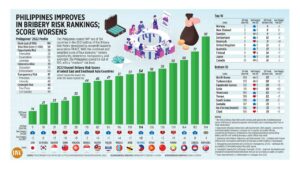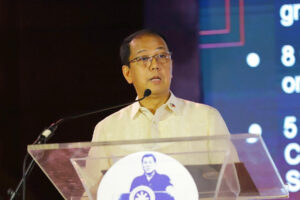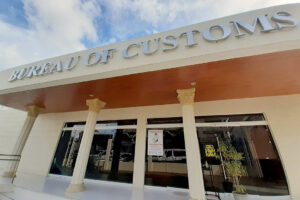Getting your finances ready for the holidays

By Bernadette Therese M. Gadon, Researcher
“IT’S MORE expensive now. Our grocery expenses before reach P1,500, it doubled now because of the price,” Kaye Nana, a self-employed mother of one, said during an interview, discussing her monthly expenses.
Ms. Nana, 29, has an online store selling toys and an online marketer selling products. She said her family brings in around P15,000-P30,000 income monthly, while her expenses reach P15,000-P20,000 a month.
Some months, she and her husband only have enough to pay for their expenses and necessities, with the rising prices of goods and commodities, she expressed her thoughts on how she manages the family’s finances to keep them afloat monthly.
The country has been experiencing higher costs of goods and services this year as the economy bounced back from the coronavirus disease 2019 (COVID-19) pandemic restrictions, and the Russia-Ukraine conflict that started in February 2022, which sky-rocketed fuel prices this year. This led to higher inflation and currency depreciation across the globe and the Philippines was not spared from the effects.
Preliminary data from the Philippine Statistics Authority (PSA) showed the general increase of prices of widely used goods and services surged to 8% in November. This was the highest inflation rate in 14 years, a level not seen since the Global Financial Crisis.
Year to date, this put the average inflation at 5.6%, above the 2-4% target range but still below the 5.8% forecast by the Bangko Sentral ng Pilipinas (BSP).
This prompted the BSP to hike rates to control inflation. The central bank has raised a total of 350 basis points (bps) this year, with the latest 50-bp rate hike on Dec. 15.
Moreover, the aggressive tightening of the US Federal Reserve (US Fed) has led to the record low depreciation of the peso in the latter part of the year. Starting last August, the peso fluctuated between P56 and P58 against the greenback. The Philippine peso hit its record low of P59 to a dollar on Oct. 17.
While some are benefiting from the lower peso, others are feeling the effects in their daily lives.
“For our export industry, a weaker peso used to be favorable for the export industries,” Semiconductor and Electronics Industries in the Philippines Foundation, Inc. (SEIPI) President Danilo C. Lachica said in a Viber call interview.
“We would see about a one to one and one-half percent increase in exports for every peso devaluation, but because of the price pressures caused by the geopolitical and economic factors, that upside has been wiped out,” Mr. Lachica said.
Mr. Lachica said that importing products dents the economy through draining dollar reserves and suggested that localizing parts can help in reducing expenses and relying on other factors such as monetary exchange rates.
The country’s gross international reserves as of end-November amounted to $93.95 billion, preliminary data from the BSP showed. This was 12.8% lower from the year-ago level and can cover 7.5 months’ worth of imports.
Another preliminary data from the PSA showed trade in goods deficit narrowed to its lowest in 17 months to $3.31 billion in October as exports surged while imports eased.
“The advantage we have for the devaluation of the peso has been wiped out by the increase of local costs as well as the price of imported materials. that’s why that’s a motivation also for doing parts localization,” Mr. Lachica said.
“We don’t really have a choice because the choice is to stop production, which is not really an option, so we just have to bear with this challenge to absorb the costs,” he added.
Mr. Lachica said some companies carried the weight of higher costs, reduced the margins, or passed the increase to their customers.
“But, more often than not, it’s improving productivity, reducing internal costs instead of passing it on to the customers but there are situations where it’s difficult for you to do that. Especially when you have skyrocketing material prices,” he said.
Another commodity that Filipinos have felt the brunt of high prices is fuel. According to the Department of Energy, gasoline prices averaged P69.82 per liter in November 2022, 8.8% higher than the P64.16-per-liter average a year ago.
Diesel and kerosene surged to P75.87 (up by 47.4%) and P79.83 (up by 46.9%) per liter in November from P51.47 and P54.33 per liter in 2021, respectively.
Ms. Nana said her family pay double the price for a full motorcycle tank. While they still use it on the same basis as last year, they pay around P300 for a full tank now compared with P180 before.
While industries and consumers tried to come up with ways to manage their finances amid growing prices, the country’s central bank also has contingencies ready to keep the peso from skyrocketing further than what we can handle.
In an interview with the Philippine central bank, it expects the financial landscape to continue this trend for the rest of the year as the US Fed maintained its hawkish stance amid the rising global inflation.
“Nonetheless, the Philippine financial system is expected to remain resilient as the BSP continues to adopt enhanced and forward-looking supervisory frameworks and policy reforms to ensure that the banking system stays resilient. Against this backdrop, the BSP remains prepared to take all necessary policy actions to bring inflation back to the 2-4% target,” the BSP said in an e-mail.
The Philippine National Bank Research said in a separate e-mail interview that inflation will likely accelerate to an average of 7.9% in the last quarter of the year.
Exchange rates will likely remain volatile for the rest of the year due to the US Fed’s stance. PNB Research gave an estimate of the peso closing within P57-P60 range by end-2022.
CURB HOLIDAY SPENDINGWith the upcoming holiday season, how will Filipinos achieve the silver lining between higher prices and be able to celebrate the holiday season?
Ms. Nana said that compared with last year when she had extra money to prepare for the holidays, this year she started to save up a few months early to have money to spend for the holidays.
“I find it hard to look for funds. I’m pushing to sell more products, unlike before where I have extra money that I can work with,” she said.
“Now, I’m asking him [my husband] for help. I’m telling him that I can’t shoulder this time and if he could shoulder it this time,” she said.
The BSP gave a few tips on how to manage one’s finances for the holidays: Set a spending limit; be creative in gift-giving; and set aside a certain percentage of your Christmas or year-end bonuses as savings.
The BSP said creating a budget for gifts, food, decorations, and family vacations will help in making sure you are on top of your expenses. Gift-giving, a custom by Filipinos didn’t need to hurt a wallet by being creative in either giving personalized or hand-made products that gives a deeper connection between the giver and receiver.
“Alongside the festivities, the influx of money in the form of company bonuses may tempt people to go on a shopping frenzy. Stop yourself from giving in to instant gratification by consciously allocating a portion of your bonuses to your savings (following the formula: Income – Savings = Expenses). Remember that you still need to keep your personal financial goals in check amidst the holidays. A fully funded emergency fund can also be a nice gift to yourself,” the central bank said.




